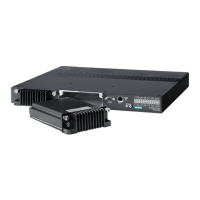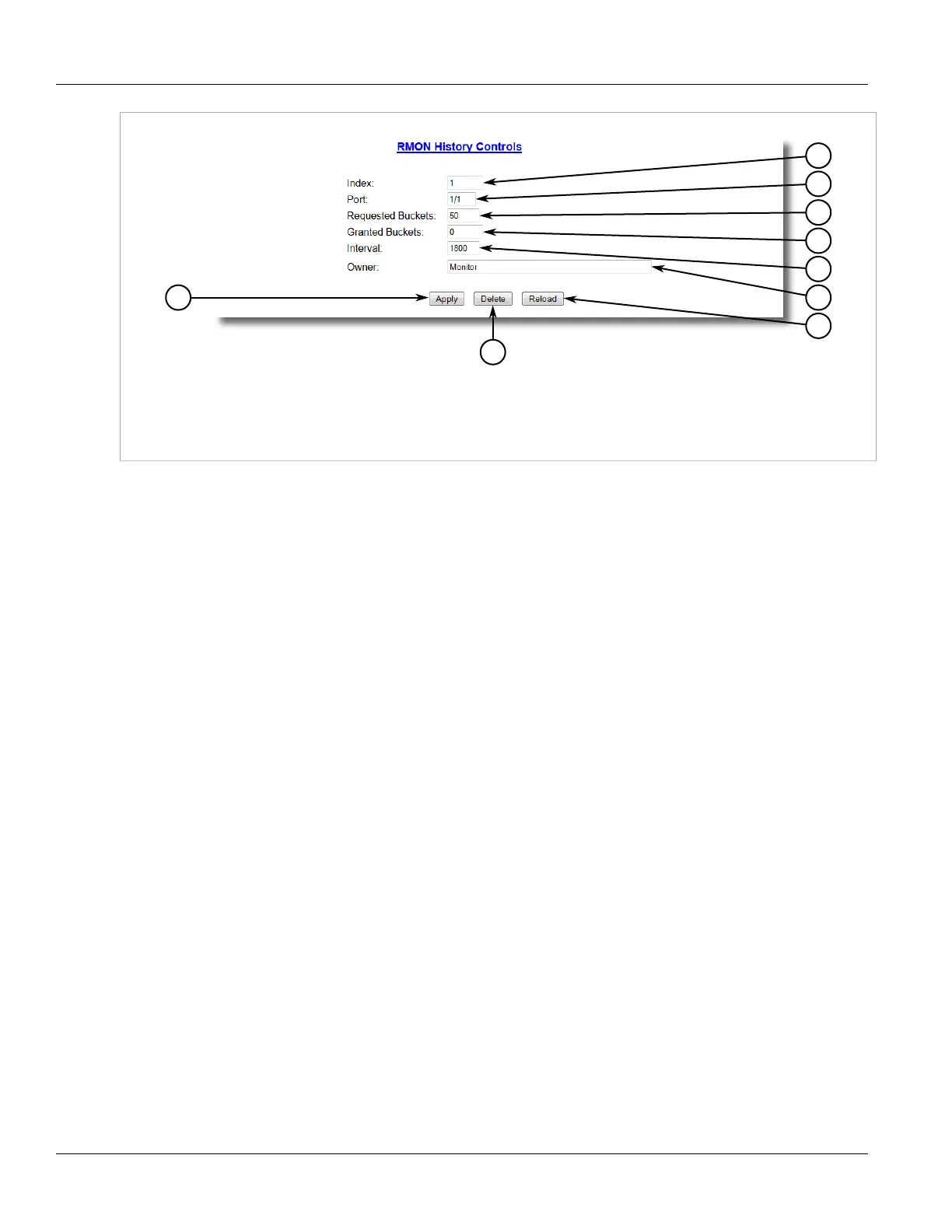Chapter 3
Device Management
RUGGEDCOM RSG2488
User Guide
82 Managing RMON Alarms
Figure 48: RMON History Controls Form
1. Index Box 2. Port Box 3. Requested Buckets Box 4. Granted Buckets Box 5. Interval Box 6. Owner Box 7. Apply
Button 8. Delete Button 9. Reload Button
3. Click Delete.
Section 3.11.2
Managing RMON Alarms
When Remote Monitoring (RMON) alarms are configured, ROS examines the state of a specific statistical
variable.
Remote Monitoring (RMON) alarms define upper and lower thresholds for legal values of specific statistical
variables in a given interval. This allows ROS to detect events as they occur more quickly than a specified
maximum rate or less quckly than a minimum rate.
When the rate of change for a statistics value exceeds its limits, an internal INFO alarm is always generated. For
information about viewing alarms, refer to Section 4.4.2, “Viewing and Clearing Latched Alarms”.
Additionally, a statistic threshold crossing can result in further activity. An RMON alarm can be configured to point
to a particular RMON event, which can generate an SNMP trap, an entry in the event log, or both. The RMON
event can also direct alarms towards different users defined for SNMP.
The alarm can point to a different event for each of the thresholds. Therefore, combinations such as trap on rising
threshold or trap on rising threshold, log and trap on falling threshold are possible.
Each RMON alarm may be configured such that its first instance occurs only for rising, falling, or all thresholds
that exceed their limits.
The ability to configure upper and lower thresholds on the value of a measured statistic provides for the ability to
add hysteresis to the alarm generation process.
If the value of the measured statistic over time is compared to a single threshold, alarms will be generated each
time the statistic crosses the threshold. If the statistic’s value fluctuates around the threshold, an alarm can be
generated every measurement period. Programming different upper and lower thresholds eliminates spurious
alarms. The statistic value must travel between the thresholds before alarms can be generated. Figure 49, “The
Alarm Process” illustrates the very different patterns of alarm generation resulting from a statistic sample and the
same sample with hysteresis applied.

